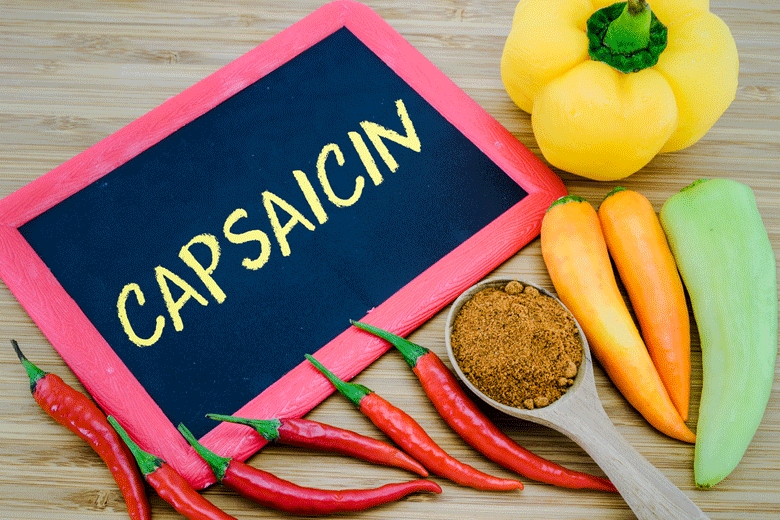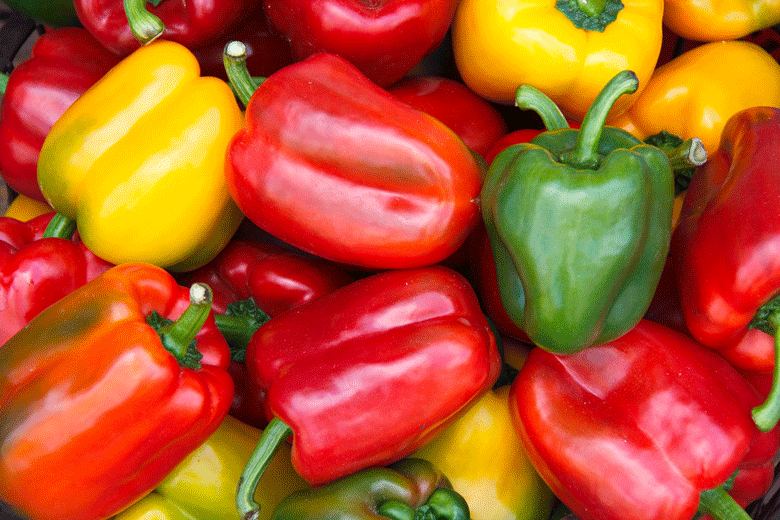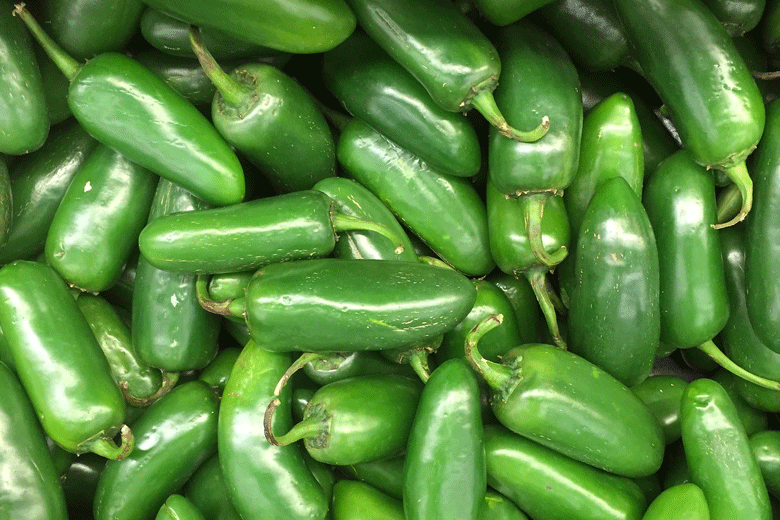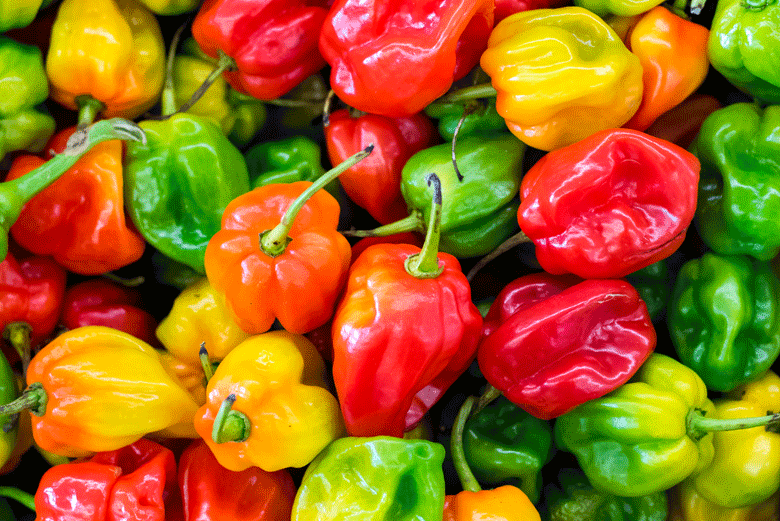What is Capsaicin?
Wilber Scoville
Many Chilli fans will have heard of the Scoville rating system. This system measures the pungency of Chillies in terms of what is known as Scoville heat units. The higher the number of Scoville units (SHU) a Chilli is rated at, the hotter it is. For example, Bell peppers are rated zero SHU, and the Carolina Reaper (officially the world’s hottest Chilli) is between 1500000 and 2150000 SHU.
The Scoville rating system came into existence when Wilbur Scoville, an American pharmacist, developed a method of measuring the heat levels of individual varieties of Chilli in 1912.

The original system involved capsaicin being extracted from dried hot Chillies with alcohol. This was then diluted in sugared water. A panel of five trained men would taste progressively decreased dilutions of the extract until at least three could not detect the presence of capsaicin. Each dilution was measured as 100 SHU. The number of dilutions multiplied by 100 determined the Scoville heat rating of the variety being tested.
Today, testing for capsaicin levels has become far more precise with the use of high-performance liquid chromatography. The results achieved with this method are more reliable because they are not dependent on a subjective perception of heat, but rather on the scientific analysis of capsaicin
Most Scoville rating charts will provide a range of heat units for a Chilli variety. This is because not all Chillies are the same. Individual pods may contain more or less capsaicin, even though they are of the same variety (and for that matter even from the same plant) . For this reason, more than one pod is tested. Pods are selected from various plants grown together in a single season . The lowest and highest test results are then provided as the heat range of the particular variety. The middle of the range is the average SHU of the specific variety.
Chilli Catagories
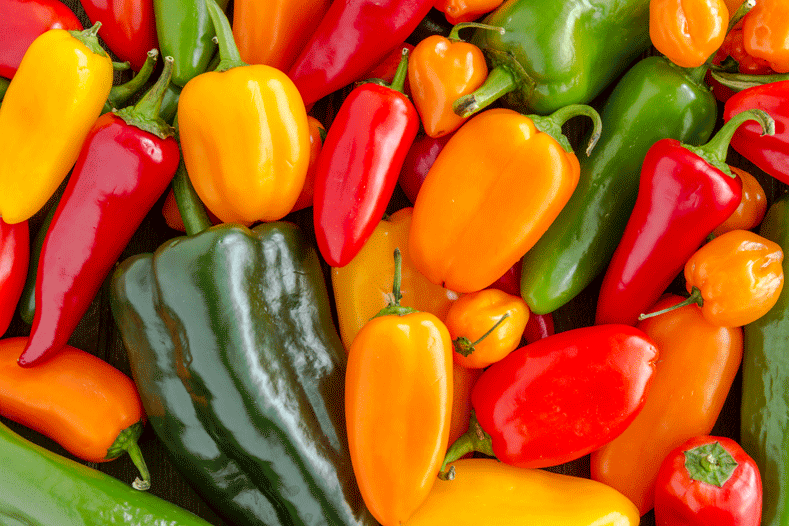 Prepare for launch
Prepare for launch
Using the findings gained with this equipment., it is possible to classify Chillies into seven broad categories. These categories range from the very mild (with no capsaicin at all) to what are called the superhots. Superhots can have a rating of over 1000000 SHU. The hottest Chillies Pepper X and the Dragon’s breath (see note) have higher ratings of 3180000 and 2480000 SHU respectively.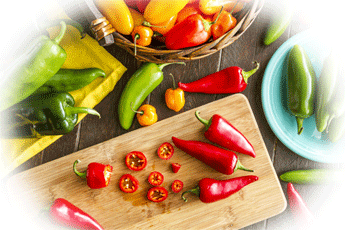
As a general rule, the smallest Chillies have the most pungency. The larger Chillies, like Bell peppers, for example, have little or no heat at all.
In my opinion, once Chillies exceed 350000 SHU, they can’t easily be used in everyday cooking. They are just too hot. As a general rule, you will find them mainly in novelty hot sauces, relishes or dried for use in a Chilli grinder. These uses are meant mainly to add piquancy to foods.
That’s not to say they don’t have a terrific flavour. Many do. The Carolina reaper, for example, has a flavour described as sweet and fruity. Chefs, however, usually only use it in powder form in cooking. In this way, they can control the level of heat, which otherwise would be unbearable
On the other end of the scale, milder Chillies like Shishitos are used more as vegetables than for their heat giving properties. With these Chillies, the flavour and their nutritional value are the most important attributes.
Very Mild
Zero point
Chillies that fall under this category have Scoville ratings of zero to one five hundred SHU. In many instances, they are used to make dishes like Rellenos or stuffed peppers. They are also often used to make Chilli pickles and as a vegetable
Bell peppers (aka sweet peppers) 0 – 0 SHU.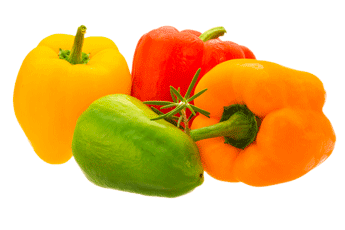
Corno di Toro – 0 to 500 SHU.
Banana Chillies – 0 to 500 SHU.
Trinidad perfume – 50 to 500 SHU.
Panca Chilli – about 500 SHU.
Zavory (a mild Habanero) – about 100 SHU.
Recipes where these Chillies are used include Chillies with Feta, Chilis Rellenos with Corno di Toro Peppers , Babotie stuffed peppers and pickled Chillies.
These Chillies are sometimes combined with other more pungent Chillies in cooking. Bell peppers, for example, are often combined with Jwala or Indian green Chillies , onions. tomatoes, garlic and ginger to make a base for curries.
Mild
T – 20 and holding
These Chilies have a Scoville hear rating of 500 to 2500 SHU. At this Chilli heat level, some piquancy is added to the equation. They may be used to add flavour and colour (as in Kashmiri Chillies) to stews, curries and stir fries. They may also be used to make pickles and used as a vegetable or in salads. They, however, don’t have much of a bite.
Padron Chillies – 500 to 2000 SHU (some can be substantially hotter).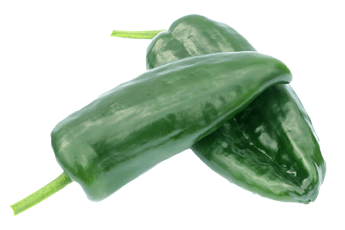
Anaheim – 500 to 2500 SHU.
Bellaforma – about 700 SHU.
Pepperdew ® – 1100 to 1200 SHU.
Rocatillo – 1500 SH to 2500 SHU.
Poblano Chillies – 1000 to 2000 SHU.
Recipes that can be made using these Chillies include Rellenos, Padron Chillies fried in olive oil, Grilled scallops with Rocotillo mango relish. They can also be used to make various salads, including Pork, Pineapple, and Anaheim Chilli Salad with Avocado and Pepperdew ® and prawn salad.
Medium
T -20 and counting
At this point, the Chillies start coming into their own as a spice. They have a Scoville rating of between two thousand five hundred and ten thousand SHU. They are used to make jams, chutneys, pickles, hot sauces, relishes and Chilli vinegar. They are also widely used to make dishes like Jalapeno poppers, Hünkar Beğendi, Guacamole and Moles.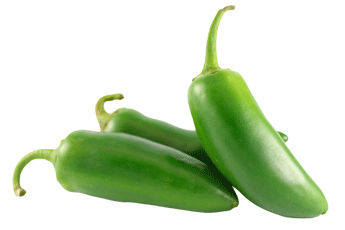
Jalapenos – 3000 to 8000 SHU
Green Trinidad – about 3000 SHU.
Espellette – about 4000 SHU.
Chipotle – 5000 to 8000 SHU.
Hidalgo – 6000 to 10000 SHU.
Aleppo Chillies – about 10000 SHU.
Puya Chillies – 5000 to 10000 SHU.
Other recipes for Chillies that fall under this category include Piperade, Poulet Basquaise (Basque Chicken) and Axoa de Veau (stewed veal). These are all recipes made in the Basque region of France with Espelette Chillies. Chipotles (which are dried Jalapenos) are widely used in Mexico to make sauces like Chipotle sauce for use with Tacos, Fajitas and more.
Hot Chillies
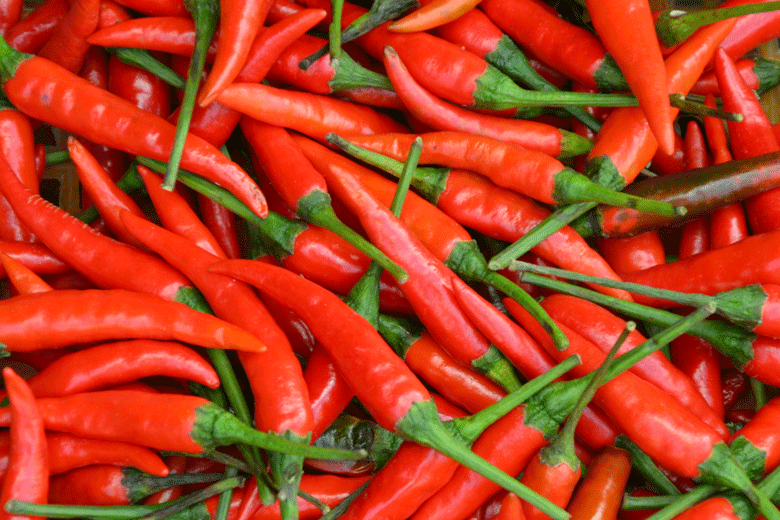
T – 10 and counting
Anything above five thousand SHU is where anyone not accustomed to eating Chillies begins to feel the heat. Chillies in this category have a Scoville heat rating of ten thousand to fifty thousand SHU.
They are widely used in cooking dishes where diners like pungency in their food. Typically these are the heat levels of Chillies one might find in Indian, South East Asian, Chinese and Mexican cooking.
Serrano Chillies – 10000 to 30000 SHU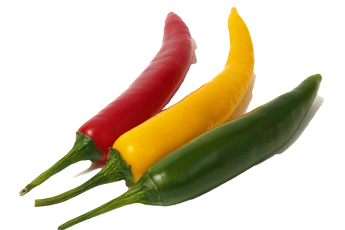
Jwala Chilli – 20000 to 30000 SHU
Aji Crystal – 12000 to 25000 SHU
Cayenne – 30000 to 50000 SHU
Tabasco – 30000 to 50000 SHU
Manzano – 12000 to 30000 SHU
Erjingtiao Chilli – 15000 and 20000 SHu
Black Cobra – 20000 to 40000 SHU
Recipes where these Chillies are used include chicken curry, Chinese stir fries, Serrano pepper burgers, chicken burritos, salsas and in hot sauce. Other uses include Chilli Vinegar, pickles and Chilli oils.
Very hot
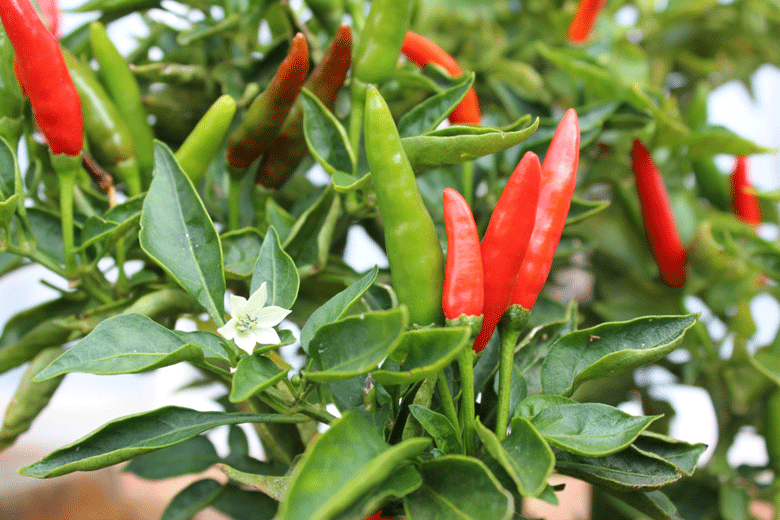
The engines have been ignited
The Chilli heat in his category is fifty thousand to two hundred and fifty thousand SHU. Chillies are used in this heat range, and are widely used in cooking in countries (including Thailand, Indonesia and Korea) around the globe. Chillies like the Aji Rocoto are used in Peruvian cooking.
African birds-eye – between 150000 and 175000 SHU.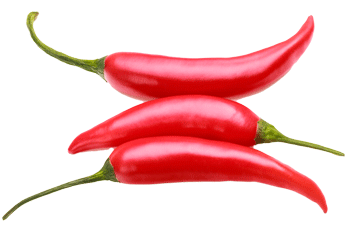
Rocotos – 30000 to 100000 SHU (sometimes as hot as 250000 SHU).
Malaguetas – 60000 to 100000 SHU.
Chiltepin -50000 to 100000 SHU.
Chi Chien = 40000 to 70000 SHU.
Apache -80000 to 100000 SHU.
Thai birds -eye – 50 000 to 150 000 SHU.
Byadgi Chillies – 50000 to 100000 SHU.
Chillies in this heat range can be found in hot sauces like Peri Peri sauce and Sriracha. They are also widely used to make dishes with Piri – Piri Chicken, Frango Charrusco and Thai Cashew Chicken Other uses include dipping sauces, stir fries, curries, seafood and many more.
Extremely hot
Prepare for lift off
This category includes Chillies in the two hundred and fifty to six hundred Scoville heat unit range. Anyone eating these Chillies must be a fan of pungent foods. While Chiilies like Scotch bonnets and many Habaneros with a Scoville rating of about 350000 SHU can comfortably be considered eating Chillies, once you start considering some of the hotter Habaneros, you are entering a different world.
The following Chillies fall into this category at the upper end of their Schoville heat ratings. Individual pods may be milder.
Fatalii Chillies – up to 400000 SHU.
Scotch bonnet – About 350000 SHU.
Red Savina Habanero – up to 577000 SHU.
Hainan yellow lantern – about 300000 SHU.
Wiri Wiri – up to 350000 SHU.
Madam Jeanette up to 350000 SHU.
Aji Chombo -150000 to 35000 SHU.
Chillies at the 350000 SHU level are widely used in Caribbean cooking to make dishes like Jerk Chicken and Jamaican Curry Chicken. These Chillies are also extensively used to make hot sauces. Scotch bonnets are a favourite for making hot sauces in the West Indies and many other parts of the world. In China, the Hainan yellow lantern gets top position for this use.
Superhots
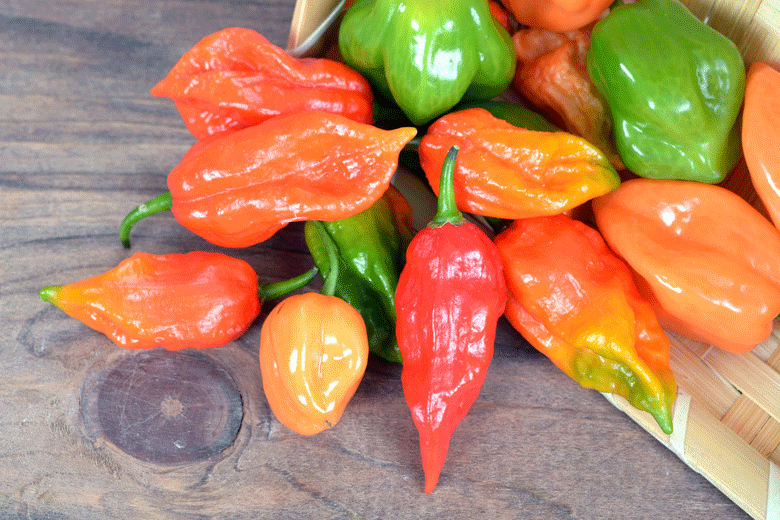
We have a lift off
Any Chilli above six hundred Scoville heat units. Chillies in this heat range can start becoming dangerous. It is advisable to wear gloves when handling them. At the top end of the scale, Chillies like the Dragon’s breath can even cause the symptoms of anaphylactic shock if consumed. Some superhots (definitely excluding the Dragon’s breath and Pepper X) can be eaten, but extreme care should be taken in the quantities used. A single Carolina Reaper, for example, can contain as much capsaicin as six (or more) Scotch bonnets.
Dorset Naga – 900,000 to 1 300,000 SHU.
Carolina Reaper – 1.5 million to 2.125 million SHU.
Dragons’ breath – about 2480000 SHU.
Pepper X – top end rating 3180000 SHU.
Dorset Zinger – approx. 1,060,000 SHU.
Bhut Jolokia – 855000 – 1.041 million SHU.
Trinidad Moruga Scorpions – 1,200,000 to 2,000,000 SHU.
Superhots can be used in cooking to make hot sauces and flavour some curries. The 7 pot Douglah, for example, gets its name from the fact that one Chilli is enough to add pungency to seven pots of curry. Phaal, the hottest curry in the United Kingdom, and the USA, is the type of dish that could be made with some of these superhots. However, be warned, these Chillies are not for the faint hearted. Be cautious when you eat them, otherwise you may regret it. You definitely don’t want to tell Houston that you have a problem!
Note:
These ratings still need to be officially confirmed.

